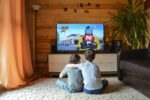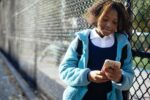Social media use is widespread among students, with studies showing that more than half use at least one platform by the time they turn ten. Many teachers and parents go to great pains to keep their children away from social media sites; however many of these sites can enrich education. The ways that these networks can be used in lessons may help you view them in a brand new light.
Despite the site insisting its users be at least 13 years old, Facebook is the most popular social network among children. More than half of 8- to 16-year-old users admitted that they ignored this age limit when signing up. While Facebook has some adult content, under close supervision children can learn a lot from this popular site, and so can educators.
- Attend lectures and educational presentations remotely
- Encourage students to follow politicians, museums, galleries, and other relevant and educational pages
Twitter and Facebook are known as the “big two” in the social media game. Some might say that nothing of note can be said in just 140 characters, but a closer look at this microblogging platform should be enough to bust that misconception.
- Track what people are saying about current events by monitoring hashtags
- Encourage young students and reluctant writers to express themselves
- Live-tweet field trips for sick children or parents
YouTube
YouTube has much more to offer kids than just funny animal videos. It’s one of the most popular social sites among 8 to 11 year-olds, and it’s also a favorite among younger and older students. Some say the site can even make kids smarter.
- Design playlists so children are only watching approved and relevant video content
- Encourage children to film and edit videos for a class channel
- Record and post classroom lessons so students can review them at home
The visual layout of Pinterest makes it a favorite among children, especially visual learners and young students who can’t yet read. Teachers have also embraced this social media site, but many have yet to realize its usefulness in the classroom.
- Use as a collaboration tool for in-class and remote group assignments
- Find creative printouts and lesson plans
- Help young students become familiar with bibliographies by creating boards of research sources
Instagram is another visual social media site, but rather than pinning the information of others, its emphasis is on the creation of original artworks. It’s a favorite among budding photographers; and, according to CNET, it’s the social network of choice for tweens. But it also has great applications as an educational resource.
- Showcase student artwork for the family and the wider community
- Post photos of field trips and vacations to create an online archive of your adventures
- Post photographs of the stages of a process, such as a science experiment or baking a recipe, so your student can refer to it later
When looking to enhance your student’s education with social media, start with K12’s Facebook, Twitter, YouTube, Pinterest, and Instagram sites for engaging educational resources! And follow Learning Liftoff on Facebook and Twitter!
*This article was updated June 2017.





































